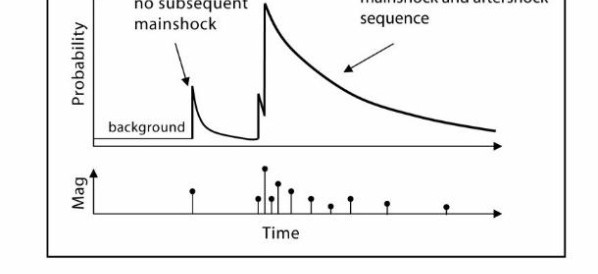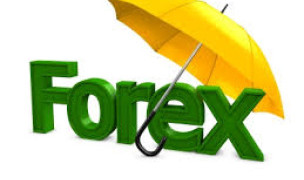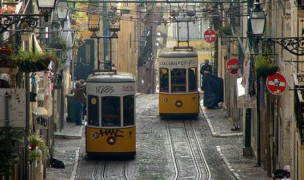 18 Terms
18 TermsHome > Terms > English (EN) > visual arts
visual arts
Prior to the Second World War, Paris remained the most important center of modern art, while American art labored under a sense of relative cultural impoverishment. By the mid-1950s, however, with the emergence on the international scene of abstract expressionism, a specifically American form of avant-garde painting (also known as the New York School), dominance moved from Paris to New York City, NY. The central individual figure in this shift was the painter Jackson Pollock, whose canvases covered in “allover” compositions of dense skeins and swirls of dripped and thrown paint remain the most familiar icons of abstract expressionism. His stylized machismo and early death in a car accident provided a powerful image of the American artist as a hard-drinking, hardliving individualist driven by existential angst.
The abstract expressionists and a subsequent generation of American abstract artists were championed by the critic Clement Greenberg, whose essay “Modernist Painting” (1961) became the most influential account of a version of modernism that seemed largely devoid of social content—its criticality lay in the degree of autonomy it could achieve through the rigor of its reflection upon the essential qualities of a specific medium.
Pollock himself had been associated with the Works Progress Administration’s New Deal public art projects, and with leftist Mexican muralists like David Siqueiros, as well as the conservative American regionalist painter, Thomas Hart Benton. But both Pollock’s rugged individualism and Greenberg’s formalism were able to be used, in the political context of the Cold War, to promote the dynamism of American liberalism and to generate cultural capital to match America’s military and industrial dominance. Hence the interest of the CIA in such exhibitions as the survey of modern art in the United States that toured Europe in 1955–6 (see Guilbaut 1985).
The case of abstract expressionism and the ideological service into which it was pressed set the tone for the role of the visual arts in American culture after 1945. The visual arts have frequently provided stakes in contests, ostensibly to do with questions of artistic form or social engagement, which were as much political as aesthetic.
The political content of American visual arts has not always been explicit. Younger American artists in the mid-1950s, among them Robert Rauschenberg and Jasper Johns (see neo-Dada), and later in the 1960s Andy Warhol, unburdened themselves of the portentousness of abstract expressionist heroism. They opened their work up to the contingency of the everyday contesting the separation of high and mass cultures. In the mid-1960s, the minimalists’ simple, geometrical objects deflected viewers’ attention away from themselves towards the immediate physical conditions of aesthetic perception.
This facilitated subsequent investigations of the institutional production of aesthetic value, in opposition to traditional, ideologically weighty notions of universal or transcendent values.
In other instances, however, it has been very clear what was at stake in battles over the value of particular forms of representation. Artists provided imagery in support of the Civil-Rights movement and anti-Vietnam War protests. The Feminist Art movement of the 1970s, including artists such as Judy Chicago and Miriam Schapiro, directly challenged assumptions about who could make art, and what constituted appropriate subject matter. This introduced such taboo or undervalued aspects of women’s experience as menstruation and domestic labor. They were especially critical of the ways in which women were commonly represented, both in art and mass culture, and concerned with asserting a right to self-representation. Some artists staged confrontational performances in public to dramatize and criticize conventional representations of women, while others, such as Mary Kelly made theoretically sophisticated work examining the psychological mechanisms of patriarchal domination.
Ronald Reagan’s presidency saw the elaboration of various forms of critical visual arts practice, grounded in developments of the 1960s and 1970s. Individually or in collaboration with activist organizations like ACT UP (AIDS Coalition To Unleash Power), artists attempted to turn massmedia techniques to different, politically oppositional purposes. But the 1980s also saw a resurgence of traditional styles of painting (neoexpressionism), and the art market boomed along with the stock market, as if to re-emphasize art’s historical relation to privilege.
The stock market fell and the boom subsided. In the late 1980s, a body of work emerged that was grounded in “identity politics,” that is, in the specific experiences of artists who saw themselves as members of ethnic and other minorities. This pointed to a history of limited access to the institutions of art, but it had the unintended consequence of specifying and fixing identities in categories.
The election of Republican George Bush, after two terms of Reagan, encouraged Democratic politicians to begin to move towards centrist positions on economic issues.
This would eventually contribute to the election of Democratic President Bill Clinton.
Meanwhile, riding an ideological tide propelled by a conservative Christian minority and claiming to be disgusted by artistic representations of anti-normative identities, Republican leaders including Senator Jesse Helms seized upon “traditional values” and “morality” issues for political leverage. One highly visible result of this was the “culture war” of the late 1980s and early 1990s (though it might be observed that few Democratic politicians defended culture very strongly). Sexually explicit art by openly gay artists such as Robert Mapplethorpe and David Wojnarowicz, which had appeared in institutions or exhibitions supported in part by federal funds, became a political football as conservatives attacked the funding organization, the National Endowment for the Arts. They succeeded in cutting the NEA budget dramatically and in changing its procedures for making awards.
Federal support for the arts in America was already relatively very low among developed nations (American artists and institutions rely relatively heavily on foundations, the philanthropical support of corporations and the wealthy). So, in the light of the electoral success of congressional Republicans in the mid-1990s, perhaps what was most significant about the “culture wars” was that they demonstrated again the relationship in the American context between the desire to control representation (who represents whom and what, and how), and the desire to control, influence or maintain social values. In the 1990s, when American arts institutions must compete globally for tourist revenues and are confronted by increasingly diverse local audiences, such contests seem bound to become increasingly complex.
- Part of Speech: noun
- Synonym(s):
- Blossary:
- Industry/Domain: Culture
- Category: American culture
- Company: Routledge
- Product:
- Acronym-Abbreviation:
Other Languages:
Member comments
Terms in the News
Billy Morgan
Sports; Snowboarding
The British snowboarder Billy Morgan has landed the sport’s first ever 1800 quadruple cork. The rider, who represented Great Britain in the 2014 Winter Olympics in Sochi, was in Livigno, Italy, when he achieved the man-oeuvre. It involves flipping four times, while body also spins with five complete rotations on a sideways or downward-facing axis. The trick ...
Marzieh Afkham
Broadcasting & receiving; News
Marzieh Afkham, who is the country’s first foreign ministry spokeswoman, will head a mission in east Asia, the state news agency reported. It is not clear to which country she will be posted as her appointment has yet to be announced officially. Afkham will only be the second female ambassador Iran has had. Under the last shah’s rule, Mehrangiz Dolatshahi, a ...
Weekly Packet
Language; Online services; Slang; Internet
Weekly Packet or "Paquete Semanal" as it is known in Cuba is a term used by Cubans to describe the information that is gathered from the internet outside of Cuba and saved onto hard drives to be transported into Cuba itself. Weekly Packets are then sold to Cuban's without internet access, allowing them to obtain information just days - and sometimes hours - after it ...
Asian Infrastructure Investment Bank (AIIB)
Banking; Investment banking
The Asian Infrastructure Investment Bank (AIIB) is an international financial institution established to address the need in Asia for infrastructure development. According to the Asian Development Bank, Asia needs $800 billion each year for roads, ports, power plants or other infrastructure projects before 2020. Originally proposed by China in 2013, a signing ...
Spartan
Online services; Internet
Spartan is the codename given to the new Microsoft Windows 10 browser that will replace Microsoft Windows Internet Explorer. The new browser will be built from the ground up and disregard any code from the IE platform. It has a new rendering engine that is built to be compatible with how the web is written today. The name Spartan is named after the ...
Featured Terms
foreshock
A foreshock is an earthquake that occurs before a larger seismic event (the mainshock) and is related to it in both time and space. The designation of ...
Contributor
Featured blossaries
Browers Terms By Category
- Cardboard boxes(1)
- Wrapping paper(1)
Paper packaging(2) Terms
- Hand tools(59)
- Garden tools(45)
- General tools(10)
- Construction tools(2)
- Paint brush(1)
Tools(117) Terms
- Material physics(1710)
- Metallurgy(891)
- Corrosion engineering(646)
- Magnetics(82)
- Impact testing(1)
Materials science(3330) Terms
- Marketing communications(549)
- Online advertising(216)
- Billboard advertising(152)
- Television advertising(72)
- Radio advertising(57)
- New media advertising(40)
Advertising(1107) Terms
- Biochemistry(4818)
- Genetic engineering(2618)
- Biomedical(4)
- Green biotechnology(4)
- Blue biotechnology(1)




